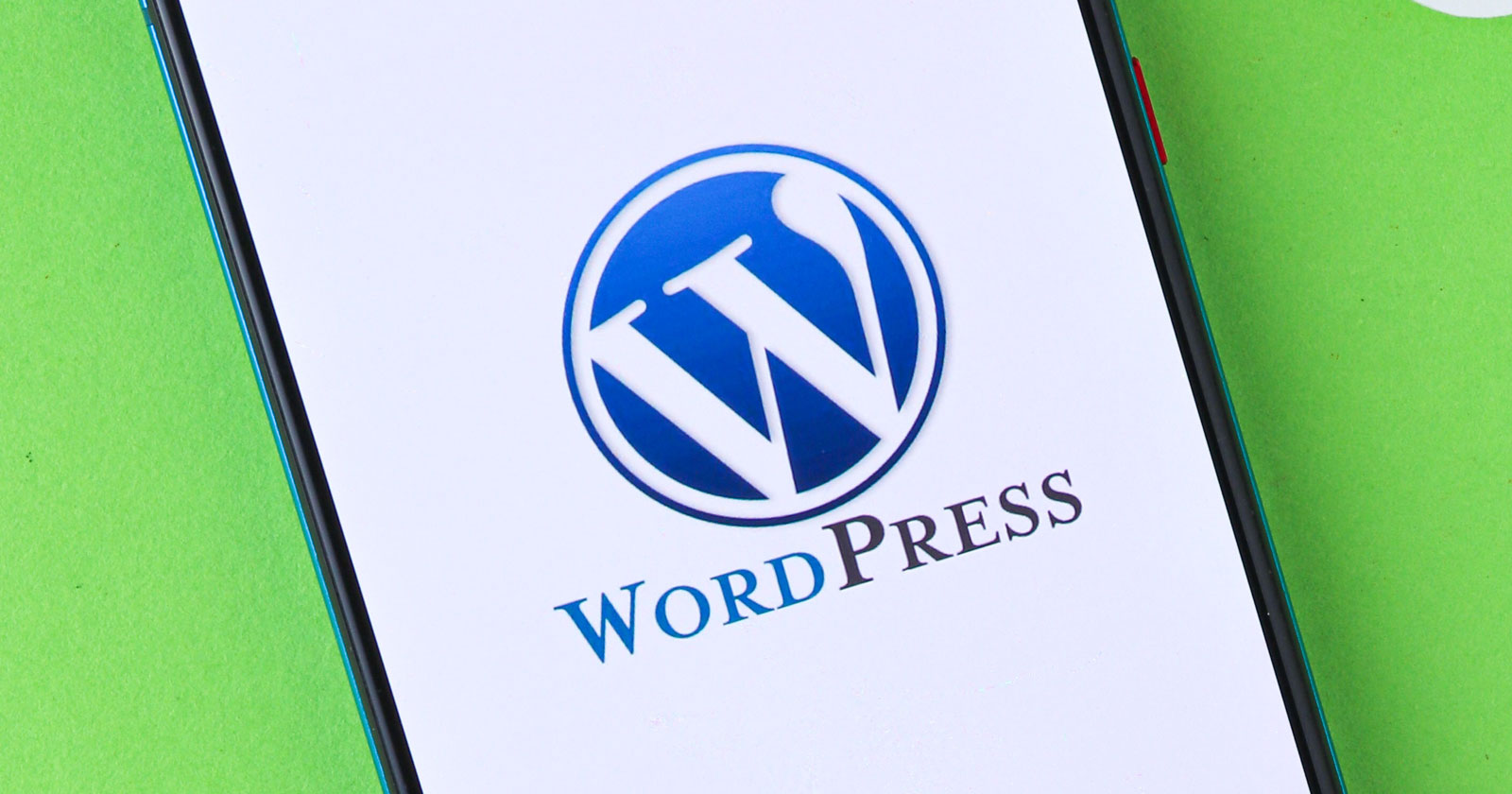SEO
5 Reasons Why Your PPC Leads Are Not Converting

As a PPC manager, nothing feels better than an account running smoothly.
Campaigns are crushing their lead goal, even staying within their Cost Per Lead benchmark!
Then out of nowhere, the fun stops during a meeting. The client states, “We’re spending a lot of money on PPC. You say leads are coming in, but we’re not seeing the sales. Why?”
In the client’s eyes, it’s easy to blame the PPC channel whenever there’s a shift in performance.
But as PPC managers (whether working at an agency or in-house), we don’t always have insight into what happens after a user becomes a lead.
Below are a few key reasons why PPC leads may not be converting.
(Spoiler alert – they’re more common than one might think!)
1. Marketing & Sales Teams Disconnect
A common observation in many companies: marketing and sales don’t talk to each other.
That is, until there’s a problem and everyone’s pointing fingers.
The common sales cycle is expected to look like this:
What isn’t shown or understood is everything that happens in between this process! (More on that in section 2).
 Image from Shutterstock, July 2023
Image from Shutterstock, July 2023This complicated buying journey is like trying to peel back a huge onion – the ones that make your eyes well up.
It may be an overwhelming concept to think about.
Below are a few questions each team should consider to start the conversation and peel back that onion.
- How long is the sales cycle actually vs. my expectations of an ideal sales cycle?
- When does the responsibility of leads transfer from marketing to sales?
- Are there any key trends coming up in unqualified leads?
- How long does it take for sales to contact an initial lead?
- Are there any pain points discussed between sales and an initial lead?
This is a more strategic conversation that really doesn’t have anything to do with PPC, but the business as a whole.
2. Ideal Vs. Actual Sales Cycle Timelines Are Misaligned
Do you know your client’s or business’s average sales cycle timeline?
More importantly: have you ever asked the sales team how they reached that conclusion?
I’ve seen this disconnect far too often working both as an agency marketer and in-house practitioner:
Sales cycle timelines are more based on assumptions than actual data!
As PPC managers, data is king when it comes to making decisions.
So, sales cycle timelines that aren’t based on actual data sound crazy, right?
The problem with not knowing a company’s average sales cycle can be a detriment to any PPC program, but not due to the PPC program itself.
Let’s break down an example here.
 Image created by author, July 2023
Image created by author, July 2023In this example, a PPC program is meeting its goal of 50 leads per month. The assumed sales cycle timeline communicated is 30 days.
30 days later, the sales team blames marketing that the leads aren’t converting into paying customers.
As the PPC manager, you dig in right away to try to find the root cause of the issue:
- Are the keywords not aligned?
- Is the target audience qualified?
- Does the ad copy align with the offer?
After much digging and conversations with the sales team, it’s discovered that the average sales cycle is 60-90 days. Not 30 days.
So, what’s the outcome of this discovery?
The fact that leads aren’t converting after 30 days is not necessarily a PPC problem. The user is likely one-third or halfway through their buying journey!
Now that there’s actual data behind the sales cycle timeline, where do you go from here?
The key is to reset expectations in the PPC program. For example:
- If a PPC program brings in 50 leads in one month, the actual conclusion of quality leads won’t be known until 60-90 days after
- If a client is asked to increase the budget by 50% overnight, the volume of leads will likely increase. That doesn’t mean the sales cycle timeline speeds up as well.
This section is in direct correlation with point #1.
There will always be a responsibility transfer from marketing to sales.
In this case, marketing’s role is to bring in qualified leads. The sales role is to convert them to customers within 90 days on average.
The other key is to set realistic expectations with the sales team. More importantly, communicate results – and often.
3. Sometimes, Budget Is The Main Issue
When was the last time an audit was performed on unqualified leads?
I recently went through this exercise with a client. We looked specifically at PPC leads because the team was told they were unqualified.
Are you sensing a theme here yet?
The results found were staggering:
- 85% were unqualified due to “budget.”
- 10% were unqualified due to no contact/follow-up from the sales team. (What?)
- 5% were unqualified because the company wasn’t a good fit.
Even after a few volatile years in the market, much of which can be attributed to external factors like the pandemic, buyer behavior is still shifting.
While many companies may truly be interested in a product or service, they simply may just not have the budget right now.
Are budget concerns a reason to unqualify those particular leads?
A strategic shift could be to categorize these leads in a “budget issue” category.
While it may take a while for most businesses to return to a sense of normalcy, these companies previously deemed as “unqualified” may become your best customers.
The key is to follow up if budget is truly the only issue.
Another strategic shift could be to look at your pricing model.
If a majority of leads are unqualified due to budget, it could be an indicator of market-perceived value – not that PPC isn’t performing.
4. High-Volume Keywords Are Driving Ineffective Leads
Quantity of leads doesn’t always equate to quality leads.
It’s typically smooth sailing when campaigns are performing and hitting lead volume goals.
But when told that leads aren’t converting – even after pivoting from sections 1-3 – it’s time to take a deeper look at campaigns.
When digging into PPC campaigns, it’s easier to find an outlier if a few keywords are driving the majority of your leads. Start there.
If a campaign is bidding on generic, high-traffic keywords, the problem could be the keyword itself.
Ask yourself these questions:
- Is the keyword too broad in nature?
- What is the intent of the search?
- Who’s my target audience?
- Are there negative keyword lists in place?
Sometimes making simple shifts to the target audience in Search campaigns can yield effective results.
For example, say your campaign is bidding on the term “industrial double-sided tape” with no audience or demographic parameters.
Even if you know your audience is likely a B2B manufacturer, a query like that is bound to get many consumer impressions and clicks.
Why?
Because Google will show that ad to anyone who searches the query, regardless of intent.
With the continued loosening of match types, Google can now match a query based on the perceived intent of a user.
Someone could search for “heavy duty double-sided tape” and could be shown an ad for the original “industrial double-sided tape” keyword.
It is up to your targeting parameters to narrow down who sees the ad for this query.
While the number of leads may decrease, the quality will likely increase.
Find additional ways to improve demographic targeting.
5. Sometimes, A Company Just Isn’t A Good Fit
There will always be leads that just aren’t a good fit for the client.
No PPC program should be expected to drive 100% qualified leads. It’s just not possible with today’s automation in PPC campaigns. Ever heard of Performance Max?
In relation to point #4, it’s always a good idea to re-evaluate the keywords a campaign is bidding on to improve the efficiency of an account.
Go back to the basics and review original keywords vs. search terms.
- Has the industry changed in recent months or years, and has keyword relevancy changed?
- Are there other ways users are searching for your product or service that you’re not bidding on?
Shifting keyword strategy to lower-volume, high-intent searches could lead to more high-quality leads.
However, there still needs to be a balance of quality and quantity of leads.
If narrowing keywords is yielding better quality but falling short on quantity, it’s time to look for additional ways to expand the PPC program.
Putting It All Together
When a channel like PPC is responsible for driving quality leads but fails to do so, it’s easy to panic or place blame.
What isn’t always easy is taking a step back to evaluate all options – including involving other teams and asking hard questions.
Better questions lead to better answers and potential untapped opportunities.
It’s a chance to understand the business better.
Ultimately, these types of questions make you an invaluable asset to the business.
More resources:
Featured Image: Andrey_Popov/Shutterstock
SEO
Executive Director Of WordPress Resigns

Josepha Haden Chomphosy, Executive Director of the WordPress Project, officially announced her resignation, ending a nine-year tenure. This comes just two weeks after Matt Mullenweg launched a controversial campaign against a managed WordPress host, which responded by filing a federal lawsuit against him and Automattic.
She posted an upbeat notice on her personal blog, reaffirming her belief in the open source community as positive economic force as well as the importance of strong opinions that are “loosely held.”
She wrote:
“This week marks my last as the Executive Director of the WordPress project. My time with WordPress has transformed me, both as a leader and an advocate. There’s still more to do in our shared quest to secure a self-sustaining future of the open source project that we all love, and my belief in our global community of contributors remains unchanged.
…I still believe that open source is an idea that can transform generations. I believe in the power of a good-hearted group of people. I believe in the importance of strong opinions, loosely held. And I believe the world will always need the more equitable opportunities that well-maintained open source can provide: access to knowledge and learning, easy-to-join peer and business networks, the amplification of unheard voices, and a chance to tap into economic opportunity for those who weren’t born into it.”
Turmoil At WordPress
The resignation comes amidst the backdrop of a conflict between WordPress co-founder Matt Mullenweg and the managed WordPress web host WP Engine, which has brought unprecedented turmoil within the WordPress community, including a federal lawsuit filed by WP Engine accusing Mullenweg of attempted extortion.
Resignation News Was Leaked
The news about the resignation was leaked on October 2nd by the founder of the WordPress news site WP Tavern (now owned by Matt Mullenweg), who tweeted that he had spoken with Josepha that evening, who announced her resignation.
He posted:
“I spoke with Josepha tonight. I can confirm that she’s no longer at Automattic.
She’s working on a statement for the community. She’s in good spirits despite the turmoil.”
Screenshot Of Deleted Tweet
Josepha tweeted the following response the next day:
“Ok, this is not how I expected that news to come to y’all. I apologize that this is the first many of you heard of it. Please don’t speculate about anything.”
Rocky Period For WordPress
While her resignation was somewhat of an open secret it’s still a significant event because of recent events at WordPress, including the resignations of 8.4% of Automattic employees as a result of an offer of a generous severance package to all employees who no longer wished to work there.
Read the official announcement:
Featured Image by Shutterstock/Wirestock Creators
SEO
8% Of Automattic Employees Choose To Resign

WordPress co-founder and Automattic CEO announced today that he offered Automattic employees the chance to resign with a severance pay and a total of 8.4 percent. Mullenweg offered $30,000 or six months of salary, whichever one is higher, with a total of 159 people taking his offer.
Reactions Of Automattic Employees
Given the recent controversies created by Mullenweg, one might be tempted to view the walkout as a vote of no-confidence in Mullenweg. But that would be a mistake because some of the employees announcing their resignations either praised Mullenweg or simply announced their resignation while many others tweeted how happy they are to stay at Automattic.
One former employee tweeted that he was sad about recent developments but also praised Mullenweg and Automattic as an employer.
He shared:
“Today was my last day at Automattic. I spent the last 2 years building large scale ML and generative AI infra and products, and a lot of time on robotics at night and on weekends.
I’m going to spend the next month taking a break, getting married, and visiting family in Australia.
I have some really fun ideas of things to build that I’ve been storing up for a while. Now I get to build them. Get in touch if you’d like to build AI products together.”
Another former employee, Naoko Takano, is a 14 year employee, an organizer of WordCamp conferences in Asia, a full-time WordPress contributor and Open Source Project Manager at Automattic announced on X (formerly Twitter) that today was her last day at Automattic with no additional comment.
She tweeted:
“Today was my last day at Automattic.
I’m actively exploring new career opportunities. If you know of any positions that align with my skills and experience!”
Naoko’s role at at WordPress was working with the global WordPress community to improve contributor experiences through the Five for the Future and Mentorship programs. Five for the Future is an important WordPress program that encourages organizations to donate 5% of their resources back into WordPress. Five for the Future is one of the issues Mullenweg had against WP Engine, asserting that they didn’t donate enough back into the community.
Mullenweg himself was bittersweet to see those employees go, writing in a blog post:
“It was an emotional roller coaster of a week. The day you hire someone you aren’t expecting them to resign or be fired, you’re hoping for a long and mutually beneficial relationship. Every resignation stings a bit.
However now, I feel much lighter. I’m grateful and thankful for all the people who took the offer, and even more excited to work with those who turned down $126M to stay. As the kids say, LFG!”
Read the entire announcement on Mullenweg’s blog:
Featured Image by Shutterstock/sdx15
SEO
YouTube Extends Shorts To 3 Minutes, Adds New Features

YouTube expands Shorts to 3 minutes, adds templates, AI tools, and the option to show fewer Shorts on the homepage.
- YouTube Shorts will allow 3-minute videos.
- New features include templates, enhanced remixing, and AI-generated video backgrounds.
- YouTube is adding a Shorts trends page and comment previews.
-

 WORDPRESS3 days ago
WORDPRESS3 days agoWordPress biz Automattic details WP Engine deal demands • The Register
-
SEARCHENGINES5 days ago
Daily Search Forum Recap: September 30, 2024
-

 SEARCHENGINES6 days ago
SEARCHENGINES6 days agoGoogle Volatility With Gains & Losses, Updated Web Spam Policies, Cache Gone & More Search News
-

 SEO7 days ago
SEO7 days ago6 Things You Can Do to Compete With Big Sites
-
SEARCHENGINES4 days ago
Daily Search Forum Recap: October 1, 2024
-

 SEO6 days ago
SEO6 days agoAn In-Depth Guide For Businesses
-

 AFFILIATE MARKETING6 days ago
AFFILIATE MARKETING6 days agoNvidia CEO Jensen Huang Praises Nuclear Energy to Power AI
-

 AFFILIATE MARKETING6 days ago
AFFILIATE MARKETING6 days agoThis Minimalist Lamp Lets You Pick From 16 Million+ Lighting Colors for Maximum Productivity














